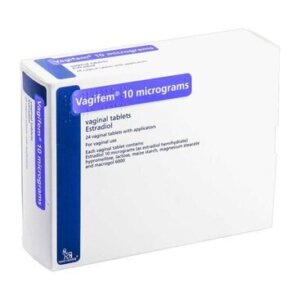When my eight-year-old son was first diagnosed with ADHD (Attention-Deficit/Hyperactivity Disorder) , it was a turning point in our lives. In one way, the ADHD diagnosis shed light on a wide range of his behaviors and challenges that were previously inexplicable and distressing. So, when we got the diagnosis, I felt some relief, but there was still a deep sense of apprehension: relief because there was finally an explanation for the problems we had been struggling to deal with, and apprehension because, well, what comes next?
The first thing we had to learn was that ADHD management is not a one-size-fits-all approach. The condition has multifaceted origins, ranging from genetic predispositions to environmental factors, and therefore requires an individualized treatment approach. We started from the American Psychological Association’s statement that there’s no “magic bullet” for treating ADHD; it often requires a multi-modal approach combining medication, behavioral therapy, lifestyle modifications, and educational interventions. However, we were encouraged to take a positive approach and take steps to manage his condition. As I found, a lot can be done to improve the quality of life of any person with ADHD.
How did I find the best person to manage my ADHD child’s unique needs?
We started off by finding who we thought was best suited to guide us through this complex process. Contrary to popular belief, the clinician who provided the ADHD diagnosis may not always be the ideal choice for ongoing care. Diagnosis and treatment are two distinct skill sets; while diagnosing ADHD may require a specialized focus on assessment, long-term treatment demands ongoing, consistent attention from the provider.
From our experience, I can say that it’s important to find a clinician who is not just licensed to prescribe medications (this varies by state) but to find one who also has significant experience with ADHD treatment. ADHD affects behavior at home, at school, and on the playgrounds. We learned from a study by the National Institutes of Health that the best outcomes in ADHD treatment often result from comprehensive care involving medication along with psychoeducational interventions.
How do you explain ADHD to a child who has just been diagnosed with ADHD?
Right up front, we were told that having ‘the talk’ about ADHD with our newly diagnosed child was crucial. But it can be daunting. We aimed for a more engaging conversation rather than turning it into a medical lecture. We started by initiating a conversation highlighting our son’s challenges (challenges he, too, could relate to). We were careful to frame it positively by stressing that there was a clear path forward and that we were all in this together. We tried to avoid making any grand promises or “this is how it’s going to be forever” kind of talk (he was only eight at the start), but we did and continue to present a reassuring reality: We’re here to help, and this diagnosis is just a part of the journey, not the end of the road.
Which medication options are available for ADHD?
As we found out, the primary purpose of medications for ADHD is to upgrade the brain’s messenger system. ADHD medications mainly focus on neurotransmitters like dopamine and norepinephrine, facilitating better attention and impulse control. The most commonly prescribed drugs are stimulants, antidepressants, and sedatives. Other parents who had been prescribed these meds told us that as long-term treatments, all of these are likely to have some adverse side effects. This is especially the case for stimulants, which can cause addiction (especially in teenagers and young college-going adults), personality changes, raised blood pressure and rapid heart rate, anxiety and irritability, headaches, and stomach aches. What’s more, it seems like these medications may alleviate symptoms but often fail to improve social interactions, which we also discovered by researching multiple studies.
Could I select treatment options for ADHD aside from stimulant medication?
Besides pharmaceutical intervention, various other strategies exist. Many specialists operating in the ADHD space offer treatments like social skills training and Cognitive Behavioral Therapy (CBT). One suggestion that immediately appealed to both my wife and me was dietary modifications because I know from long food battles that my kid has some difficult habits and preferences in what, when, and how he eats.
A great deal of material on the internet suggests that a diet that supplies omega-3 fatty acids can offer supplementary benefits for children and teenagers with ADHD. This is because to get them into proper brain chemistry, they need to be supported with micronutrient supplements. Prescribed medication is not the only way to maintain control of the hormones that can cause ADHD. A diet rich in omega-3 fatty acids will help boost dopamine levels and other neurotransmitters.
For us, a healthy diet is hard to implement because of his picky eating. Maintaining the required input of omega-3 requires eating natural sources (salmon, tuna, oysters, etc.). It is not just difficult to fit the whole family into this regular pattern, but it’s also expensive.
So, we were over the moon when we learned that adding the necessary brain food with supplements like Vayarin can be helpful! For several years, we had Vayarin on our shelves and relied on it to help control the symptoms of ADHD in the boy as he grew into a better-balanced, more friendly, and successful schoolgoer. You can imagine our disappointment when, without notice, it disappeared from the warehouses of every supplier we had ever located in the US and overseas. Now a new and better dietary supplement called Zoomind has come along to replace Vayarin, and we are alooking forward to getting back onto the road to better control.
We have tried some of the alternative techniques like improved sleep hygiene which can also impact symptom management. Introducing Melatonin into his daily medications brings an inducer of sleep that does not promote drowsiness but instead influences the timing of his sleep/wake cycle.
How do you evaluate how well the treatments are working?
How do you know if the chosen treatment plan is effective? Monitoring is key. Both children and adults should undergo regular assessments to ensure the medication or therapy delivers the expected benefits without causing harmful side effects.
How do you support your child in school?
In the context of schooling, it’s essential to be proactive. Providing the school with a formal diagnosis allows them to accurately assess the child’s needs.
Schools need to be able to determine whether there are other reasons why a child is struggling and not to confuse the symptoms with learning disabilities.
The following steps may be helpful:
- After submitting a copy of documentation when a child is diagnosed with ADHD, consider formally requesting the school to evaluate the child for attention and learning difficulties. Ask if the school has trained personnel, such as a guidance counselor who has skills in performing such an evaluation, or offer to bring in outside help to perform it along with school staff. Such an evaluation will help the school understand the extent of a child’s difficulties, whether they can be helped by adjusting regular class routines, or whether the child needs specialized instructional support.
- Under the Individuals with Disabilities Education Act (IDEA), students diagnosed with ADHD and learning disabilities or severe ADHD may be eligible for external services and support. The school is required to arrange an IEP (Individualized Education Program) for the child.
- Children with milder educational disabilities are entitled under Section 504 of the Rehabilitation Act to get accommodations in the classroom that will enable them to function as well as possible.
Conclusion
Getting diagnosed with ADHD is just the beginning. The path that follows is intricate and demands a nuanced, multifaceted approach. Armed with informed choices and comprehensive care, I found that progress is not just possible; it’s probable. So, as you stand at this crossroads, consider this a launching pad, not a dead-end. With a well-tailored plan and expert guidance, the sky’s the limit.
















